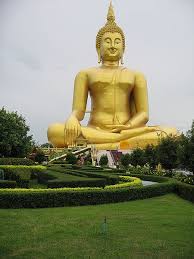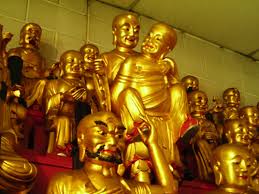Buddhism doesn’t have one set of particular rules. There are three main schools of Buddhism and many branches of those trees have their own customs and beliefs as well. The three major schools that we recognize today are Mahayana, Theraveda and Vajrayan.
Vajrayana – The practices in Tibet
It is said that Buddhism did not become a widely recognized way of the life there until the eleventh century. This is the school referred to the practices in Tibet. It is said that Buddhism did not become a widely recognized way of the life there until the eleventh century.

The Dalai Lama is known as the spiritual leader of Tibetan Buddhism. You often hear of the teachings of the Dalia Lama and the passing of the torch to the new Dalai Lama. He also has a more political role as well.
The Sakya-pa (Twany Earth School)
This
Tibetan school is named after the monastery where the school was based.
It represents a very scholarly and traditional view and was founded by
Konchol Gyelpo.
The Nyingma-pa (Old School)
Padmasambhava was an Indian saint and responsible for this school that relies on a scripture called tantras and deep meditation.
The Gelug-pa (Virtuous Ones School)
These were the yellow hats and founded by Tsonkahapa in the fourteenth century.
The Kagyu-pa (Speech School) This school puts its focus on an oral tradition of meditation. It’s most famous one is Milarepa, who reached enlightenment by meditating for many years in the very cold caves of a Tibetan mountain.
Theravada – the earliest form of Buddhism

Samatha (calm meditation) and Vipassana (insight meditation) are both used. The purpose of this form is to attain one’s enlightenment. The main scripture of Theravada is in the Pali canon, recorded in the first century BCE. The rich history and teachings are kept alive with the large communities of monks and nuns.
Mahayana
Mahayana developed as a school because the thought was that attaining enlightenment for oneself is a selfish act. Their focus was to make sure that others gain enlightenment. This is refereed to as the Bodhisattva ideal. In modern terms we may refer to them as the missionary Buddhist.
Zen/Ch’an – Riddle me this: What was your face before your parents were born? This is an example of a koan. A riddle that has no logical answer. Zen masters use these to defy logic and force others to think for themselves. Ch’an and Zen are both derived for the Sanskrit work dyhana which translates to meditation.
Pure Land – This group is striving to live together in and obtain rebirth in Pure Land. The Buddha of Infinite Light (Amitbha) presides over the Pure Land. The key to entrance into the Pure Land is genuine faith. This is practiced mainly in China and Japan.
As you can clearly see, even in Buddhism there in not one clear path to Nirvana.





